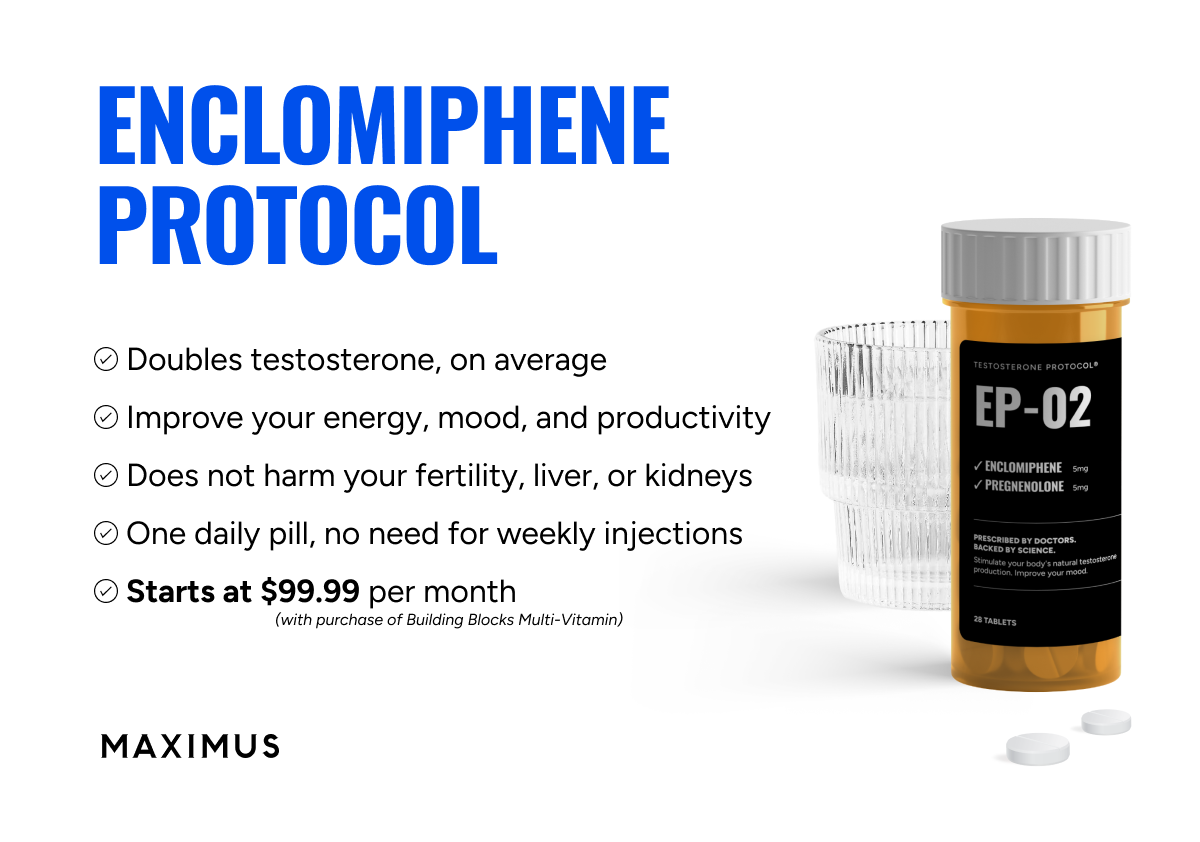Here's a thread that talks about ED and the Thyroid:
You are using an out of date browser. It may not display this or other websites correctly.
You should upgrade or use an alternative browser.
You should upgrade or use an alternative browser.
Penile fibrosis after long time without morning erections?
- Thread starter Tn198989
- Start date
Blood sugar used to be kind of high at 101 before trt.. On trt it has dropped to 88. About hba1c I am not sure but hemoglobin is normal (for trt). Isn't trimix what they use before a doppler ultrasound? If it's that then it only gave me a semi erectiondid you check your blood sugars? HBA1C? may be neurogenic? trimix will definitely fix that if that’s the problem
Right now my free t is around 26 pg/ml calculated.. I ve seen go as high as 37 which increased libido even more but erection were the sameWhat is your Free T? Since I've been on Trt, I've had times when my Total T was as high as 1300, yet my Free T was very low. My SHBG was high. Also, my estrogen was on the high side. Doctor prescribed DIM to lower my estrogen, and Magnesium, Stinging Nettle Root, Tongkat Ali, Boron and Vitamin D to lower my SHBG. I also take 5mg Cialis daily. Still, some days I'm like you, but other days, I get good erections, so overall, it's been an improvement. Pumps are great too and healthy for your dick.
Thanks I ll check it out.. Could a testosterone cycle cause problems to an otherwise healthy thyroid.. Cause I never had these issues before that first cycleHere's a thread that talks about ED and the Thyroid:
I don't know if T can affect the thyroid, but being how everything is connected, that might be something to look into.Thanks I ll check it out.. Could a testosterone cycle cause problems to an otherwise healthy thyroid.. Cause I never had these issues before that first cycle
Systemlord
Member
My TSH dropped on TRT, pre-TRT TSH was 0.89 and is now 0.45.I don't know if T can affect the thyroid
DorianGray
Active Member
My thoughts/questions:Blood sugar used to be kind of high at 101 before trt.. On trt it has dropped to 88. About hba1c I am not sure but hemoglobin is normal (for trt). Isn't trimix what they use before a doppler ultrasound? If it's that then it only gave me a semi erection
You seem to get plenty exercise so I assume you aren't overweight? Big factor.
How long off clomid? Any effects should be reversed out by 6months to 1year. At least.
Any porn or masturbation? Huge effect on mind body connection.
Free T does seem very low, but testosterone is not what keeps blood IN the penis. It's the vascular system function and nitric oxide. BTW, was it a vascular specialist or urologist who did your ultrasound?
Can you get a functional/performing erection by stimulation and keep it during intercourse?
I can give more input based on answers to above. Hang in there Tn198989.
First of all thanks for your helpMy thoughts/questions:
You seem to get plenty exercise so I assume you aren't overweight? Big factor.
How long off clomid? Any effects should be reversed out by 6months to 1year. At least.
Any porn or masturbation? Huge effect on mind body connection.
Free T does seem very low, but testosterone is not what keeps blood IN the penis. It's the vascular system function and nitric oxide. BTW, was it a vascular specialist or urologist who did your ultrasound?
Can you get a functional/performing erection by stimulation and keep it during intercourse?
I can give more input based on answers to above. Hang in there Tn198989.
No am not overweight. And what's weird is that ever since starting trt I get super veiny and pumped at the gym.
Off clomid for at least a year (somewhere around 15 months)
Hmm about the porn and masturbation. Yes to both. Not to a crazy amount maybe once every other day. I have tried Nofap even before that first steroid cycle because I had delayed ejaculation (no Ed back then). In my case I don't think it's the porn that does any damage but the masturbation.
I have noticed that when I abstain from masturbation and more importantly ejaculation I do get better erection (not like before all this started) but if i have sex with gf and ejaculate then I need another 4-5 days to be at that level again. So it helps but doesn't fix the issue. Tough to stay off of it though.
Free t actually is kind of high but I probably confused pg/ml with ng/dl.its at 26ng/dl I ve seen it go as high as 37 but it only effected desire to some extend, not ability.
The test was performed by a urologist and I have also done a simple (not doppler) penis ultrasound at another urologist and that came back ok as well.
Yes I can get an erection but it's soft and not full (like 60%). That happens with either sex or masturbation. To be clear I haven't seen my penis fully engorged since 2018 when I stopped that dreaded testosterone cycle. I can get it up pretty easily especially after starting trt. Some times just with thoughts but it's not full and during sex it's not consistent
Mine increased by 1.2 but I can't be sure it's from trt although I have a much better lifestyle than before startingMy TSH dropped on TRT, pre-TRT TSH was 0.89 and is now 0.45.
Golfboy307
Active Member
So no Venous Leak was indicated by either of your penile ultrasounds? That certainly sounds like what it could be.
Yeah I thought of that too but from what I read with venous leak you can't even get a semi erection.So no Venous Leak was indicated by either of your penile ultrasounds? That certainly sounds like what it could be.
Golfboy307
Active Member
Not true. VL exists on a continuum. You can have mild venous leak and have the symptoms you describe. Also pelvic muscle weakness/failure can also be a problem.
What is your AI dosage? I've found that too much (and it doesn't take much) kills my boners. And this amount changes over time. I also use lots of soy milk to modulate estrogen.Hello everyone,
I ve been struggling with ed since 2018 after stopping a testosterone cycle. I am on trt for a year (tried for a long time to recover with serms) and except for the honeymoon period i always struggled with ed. I ve tried many doses with different injection frequencies. With ai and without. With hcg and without. Right now i am on 200mg M/W/F and my t is 1050ng/dl with shbg 40. For a couple of months i have started daily cialis and to my surprise it brought back something i hadnt felt since all this started. Morning erections (not full erections, more like semi erect). My Libido is good but even on daily cialis my erections are not full. Cant take more than 5mg daily cause my blood pressure drops too much. I am 33 years old
I am wandering if the lack of morning wood and in general erections for all this time (since 2018) has caused some damage to the penis (like fibrosis) and thats why even with cialis (or viagra) i cant get a full erection (even though my libido is ok).
My testosterone levels or any hormone for that matter are definitely not the issue (i ve done more than 15 bloodworks and i've seen the all over). I did a penis ultrasound about a year ago and while even with the injection i only reached like 60% erection, the doctor said that my bloodflow is fine. does fibrosis appear on that test?. Could my issue be caused by lack of erections for a long time or should i look elsewhere?
Thanks in advance
No ai at all.. I inject 3 times a week to avoid it and my e2 stay at around 35-40What is your AI dosage? I've found that too much (and it doesn't take much) kills my boners. And this amount changes over time. I also use lots of soy milk to modulate estrogen.
Wouldn't that get picked up easily on the doppler ultrasound? Or is it tricky and it can be missed? Don't know how that works. I very searched too for pelvic dysfunction in general but from what I read it usually comes with other symptoms like incontinence and stuff like that which I don't have.Not true. VL exists on a continuum. You can have mild venous leak and have the symptoms you describe. Also pelvic muscle weakness/failure can also be a problem.
Golfboy307
Active Member
Do you still have the results from your doppler ultrasound? Did it note outflow velocity? Was it in range? If they did not include that stat, then they didn't test for VL.
What are the Finasteride and hernia effects?I know exactly how you feel, man. You ever had an ingual hernia surgery or anything like that?
Well i only have the actual doppler but without the diagnosis from the doc cause i wanted to show the results to my gp and took them the same day (i ll check it out when i get home and see if it says outflow velocity).Do you still have the results from your doppler ultrasound? Did it note outflow velocity? Was it in range? If they did not include that stat, then they didn't test for VL.
I remember asking him though during the procedure if he saw venous leak and he said no you dont have any. Show i dont think he didnt look for it and lie to me like that.
Do you mean high testosterone level may cause ED?Some guys would have some degree of ED at these levels and in fact some even report diminished sexual parameters anywhere near 1000 ng/dL.
Yes, IMO if an individual’s level of testosterone (T) exceeds what his genetics have programmed for him, this could cause of worsen erectile dysfunction.
I read that you are taking 200mg per week of injectable T, correct? This I would think is a very high dose for HRT purposes. Higher than normal levels of T are not good for erectile function, especially if your own natural genetic level of T is nowhere near where that amount of exogenous T raises your level. I think many men on TRT are taking too much T for good sexual function. A lot of men have natural levels of T around the 400 range and that is correct for them. I know of some young men with T levels below this who are perfectly healthy and have strong sexual function.
IMO too high a level of testosterone can interfere with the parasympathetic and sympathetic balance in the erectile tissues of the penis. Adrenergic receptor expression in these tissues is positively affected by testosterone. If sympathetic activity is elevated in the erectile tissues, that is the constant tonic norepinephrine stimulation that keeps the penis in a flaccid state during our waking hours, pro-erectile stimulus from the parasympathetic erectile neurons will have a difficult time overcoming this inhibitive force.
Research is also beginning to show in the animal model that morphological changes can occur in the erectile tissues, specifically with regard to smooth muscle content, when levels of T are either too low or in excess.
I saw that you mention that you have tried 100mg and up to 200mg and none of these amounts have worked or are working for you. Have you considered that you may need less than 100mg per week to function sexually as best you can on testosterone replacement? It could also take months of being on a much lower dose before improvement is seen. I would imagine that after being on 200mg for a considerable period, it could take time for your body to “re-sensitise” to what may be more normal for you.
I understand this well as I made a very similar mistake using too much testosterone many years ago when I knew nothing about hormones. In short, I stopped the exogenous T altogether for over a year, which I think was very good at resetting my sensitivity to lower levels of the hormone. I didn’t do it for that reason at the time, but I feel it worked very well. When I resumed TRT, sexual function was vastly improved, and my dosage was a third of what I had been taking.
Sexual function depends on all the hormones that stimulate it, not just testosterone. The big drawback with TRT is the loss of our upstream hormones. All of these hormones play a role in sexual function. Some men do not function very well sexually when LH, FSH, GNRH (and others) are missing. There may be shortcomings because of this with sexual sensation, erectile function, how often we feel the need to ejaculate or the one I hear discussed frequently; the absence of sexual urge in the loins. Finding the right level of T can help these issues considerably, but If the other hormones are not in place, sexual function will never be quite the same for some men. HCG unfortunately (as is often discussed on this forum) does not fix these issues to the same level as our own natural gonadotropins will for reasons that we know. It also cannot be tolerated by some males and can lose effectiveness.
I am not very confident with regard to Doppler ultrasound testing as it can give false positive results and also not see CVOD issues in some men. Some urologists, still, do not use phentolamine with these tests, which means excessive anxiety during the test can also skew the results.
I do wonder also about the injections that are used to generate a very unnatural erection for these tests. They must bypass many of the process’s that enable a normal erection to occur and in doing so hide any dysfunctions therein.
As the term “venous leak” has been discussed in this thread I will copy a post I did awhile back on “Frank Talk” about this particular etiology of ED. It may help you understand more about it. I have spent many years understanding erectile function and specifically erectile dysfunction.
You can most certainly get a semi erection with a “venous leak”. Even some positions may help a better erection than others e.g. standing, lying or sitting, if someone has a “venous leak”
“It may sound possible to fix a “leak”, as the word implies that there is a hole somewhere and liquid or a gas is escaping. In this instance it is blood we are talking about.
The term “venous leak” is used by doctors to use with patients or laymen so that they can have some understanding of what might be going wrong in their penis.
“You have a venous leak” they say. Ok, so what IS a venous leak in the penis? I think we need to have some more understanding of this to appreciate how difficult it is to fix.
The term venous leak is actually synonymous with the term CVOD, which stands for corporal veno-occlusive dysfunction. This means the penis is not able to perform or has difficulty performing the task of venous occlusion. In simple terms; not being able to trap enough blood in its erectile tissues to remain rigid. Generally doctors don’t say you have CVOD, they just say you have a venous leak to keep it simple.
To understand more about the dysfunctions with venous occlusion in the penis it helps if you understand how the penis performs this task normally. I am not going to go into all of this in detail here as those of you who are interested can go online and do some reading if you do not already understand it.
However, for the penis to have a good erection the corpus cavernosum (CC) needs to be able to expand to the point whereby it can compress the veins on the outside of these two cylinders which lie underneath the tunica albuginea (TA), whilst at the same time stretching the TA and causing the emissary veins leaving and running through the TA, to be compressed also. This causes blood flow out of the penis to be reduced dramatically to the point whereby enough pressure is created in the erectile tissues in the CC and thus the penis becomes much bigger and rigid.
Sounds simple, but it is far from simple. There are many process that need to happen correctly for this to occur, that can go wrong, ultimately leading to CVOD. A venous leak (for most of us unless you have an obvious congenital deformity or a simple venous shunt) is not one single leak or a few leaks at all. It is a combination of factors that lead to blood escaping through the many exit channels in the penis. Depending on how much the CC fails to expand, blood escapes through all the veins underneath the tunica and out through all the emissary veins. There is no way to fix all those leaks! Some surgeries have attempted to remedy this by reducing the quantity of veins that lie after these veins that transport blood out from the penis. They are literally removed or blocked (vein embolisation). These are very controversial procedures and offer temporary improvement in most cases and do not fix the original issue. It’s a work around so to speak. Blood flow would in this instance be reduced when the penis is flaccid, so over time I think our body will try and compensate by creating more channels or the veins that have been left will most likely enlarge.
Why does CVOD occur? The truth here is it can be a long list of possible dysfunctions that we could almost just say it’s the same list that create most causes of erectile dysfunction. Here are just some of these:
Atherosclerosis; narrowing of the arteries that supply blood to penis or the cavernosal arteries themselves.
Endothelial damage or dysfunction in the erectile tissues, which leads to compromised NO pathway function.
Endothelial damage or dysfunction in the cavernosal arteries or the arteries leading into these vessels.
Loss of smooth muscle in these tissues and the cavernosal arteries. Only a 15% loss is suggested as being enough to start causing CVOD. Excessive oxidative stress is considered to be one of the major catalysts here.
Adipocyte (fat cells) formation underneath the tunica.
Increased sympathetic activity in the penis from aging (increased adrenergic expression or sensitivity) inhibiting smooth muscle relaxation.
Change in the composition of the cells that comprise the tunica which have been suggested to lead to sealing problems underneath the tunica.
Peyronie's disease.
Strong psychogenic anxiety issues which increase adrenergic activity.
Nitric oxide dysfunctions.
Pelvic floor dysfunction; muscle spasm affecting the pudendal nerve and the arteries leading to the cavernosal arteries.
Neurological issues affecting either reflex or psychogenic erectile stimulation.
Pudendal nerve entrapment.
Hormone dysfunction or loss, excess of estrogen, loss of testosterone and DHT, leading to a loss of nocturnal erections and subsequent hypoxic conditions in the penis. Resulting in tissue changes in the corpus cavernosum, such as collagen deposition and smooth muscle loss.
A number of these dysfunctions can exist together making the CVOD issue quite complex.
Ageing of course is implicated in many of the above conditions, oxidative stress being a major player. However, these can occur even before middle age from particular lifestyle choices.
All of these issues can result in the CC either not being able to expand sufficiently to put enough pressure on the veins underneath the tunica or the tunica not being able to form a good seal with regard to those veins.
These are the common reasons why the penis fails to perform venous occlusion well and therefore CVOD happens: we get a leak so to speak, but in reality its many leaks! It’s not a single venous leak!
In less common instances IMO a venous leak could be caused by a venous shunt, that is a deformity where there is a particular point of escape, but I think these are quite rare in comparison to the above. These could in theory be repaired. The issue is having the technology to be able to find and see them accurately and then being able to seal the offending vein.
The process of ageing, diabetes and lack of exercise combined with our typical high fat, carbohydrate/sugar diets create most of the above (with some help from our genetics) and cause the conditions which enable CVOD.
There is no simple surgical cure.
Sometimes the causes that create CVOD can be fixed if caught early enough. Most of the time, doctors will treat them with the only things they know. PDE5 inhibitors to boost the function of the NO pathway, this can overcome the negative effects of some of the above mentioned dysfunctions for a period of time until they intensify. Vasoactive penis injections work even better as they bypass more of the functions that many of the dysfunctions affect until quantities of smooth muscle in the penis decline considerably or the TA fails. The penis is then at the point of not being able to be helped by medications of any sort. Once the smooth muscle has declined to that stage and non-compliant collagen tissue has formed in its place (fibrosis is clearly evident), an implant is the only way to remedy the problem. That is until science finds a way to reverse this process. IMO we may be able to do this in the early stages but once it has taken hold and advancing age is also upon us, there is not a lot we can do.”
I read that you are taking 200mg per week of injectable T, correct? This I would think is a very high dose for HRT purposes. Higher than normal levels of T are not good for erectile function, especially if your own natural genetic level of T is nowhere near where that amount of exogenous T raises your level. I think many men on TRT are taking too much T for good sexual function. A lot of men have natural levels of T around the 400 range and that is correct for them. I know of some young men with T levels below this who are perfectly healthy and have strong sexual function.
IMO too high a level of testosterone can interfere with the parasympathetic and sympathetic balance in the erectile tissues of the penis. Adrenergic receptor expression in these tissues is positively affected by testosterone. If sympathetic activity is elevated in the erectile tissues, that is the constant tonic norepinephrine stimulation that keeps the penis in a flaccid state during our waking hours, pro-erectile stimulus from the parasympathetic erectile neurons will have a difficult time overcoming this inhibitive force.
Research is also beginning to show in the animal model that morphological changes can occur in the erectile tissues, specifically with regard to smooth muscle content, when levels of T are either too low or in excess.
I saw that you mention that you have tried 100mg and up to 200mg and none of these amounts have worked or are working for you. Have you considered that you may need less than 100mg per week to function sexually as best you can on testosterone replacement? It could also take months of being on a much lower dose before improvement is seen. I would imagine that after being on 200mg for a considerable period, it could take time for your body to “re-sensitise” to what may be more normal for you.
I understand this well as I made a very similar mistake using too much testosterone many years ago when I knew nothing about hormones. In short, I stopped the exogenous T altogether for over a year, which I think was very good at resetting my sensitivity to lower levels of the hormone. I didn’t do it for that reason at the time, but I feel it worked very well. When I resumed TRT, sexual function was vastly improved, and my dosage was a third of what I had been taking.
Sexual function depends on all the hormones that stimulate it, not just testosterone. The big drawback with TRT is the loss of our upstream hormones. All of these hormones play a role in sexual function. Some men do not function very well sexually when LH, FSH, GNRH (and others) are missing. There may be shortcomings because of this with sexual sensation, erectile function, how often we feel the need to ejaculate or the one I hear discussed frequently; the absence of sexual urge in the loins. Finding the right level of T can help these issues considerably, but If the other hormones are not in place, sexual function will never be quite the same for some men. HCG unfortunately (as is often discussed on this forum) does not fix these issues to the same level as our own natural gonadotropins will for reasons that we know. It also cannot be tolerated by some males and can lose effectiveness.
I am not very confident with regard to Doppler ultrasound testing as it can give false positive results and also not see CVOD issues in some men. Some urologists, still, do not use phentolamine with these tests, which means excessive anxiety during the test can also skew the results.
I do wonder also about the injections that are used to generate a very unnatural erection for these tests. They must bypass many of the process’s that enable a normal erection to occur and in doing so hide any dysfunctions therein.
As the term “venous leak” has been discussed in this thread I will copy a post I did awhile back on “Frank Talk” about this particular etiology of ED. It may help you understand more about it. I have spent many years understanding erectile function and specifically erectile dysfunction.
You can most certainly get a semi erection with a “venous leak”. Even some positions may help a better erection than others e.g. standing, lying or sitting, if someone has a “venous leak”
“It may sound possible to fix a “leak”, as the word implies that there is a hole somewhere and liquid or a gas is escaping. In this instance it is blood we are talking about.
The term “venous leak” is used by doctors to use with patients or laymen so that they can have some understanding of what might be going wrong in their penis.
“You have a venous leak” they say. Ok, so what IS a venous leak in the penis? I think we need to have some more understanding of this to appreciate how difficult it is to fix.
The term venous leak is actually synonymous with the term CVOD, which stands for corporal veno-occlusive dysfunction. This means the penis is not able to perform or has difficulty performing the task of venous occlusion. In simple terms; not being able to trap enough blood in its erectile tissues to remain rigid. Generally doctors don’t say you have CVOD, they just say you have a venous leak to keep it simple.
To understand more about the dysfunctions with venous occlusion in the penis it helps if you understand how the penis performs this task normally. I am not going to go into all of this in detail here as those of you who are interested can go online and do some reading if you do not already understand it.
However, for the penis to have a good erection the corpus cavernosum (CC) needs to be able to expand to the point whereby it can compress the veins on the outside of these two cylinders which lie underneath the tunica albuginea (TA), whilst at the same time stretching the TA and causing the emissary veins leaving and running through the TA, to be compressed also. This causes blood flow out of the penis to be reduced dramatically to the point whereby enough pressure is created in the erectile tissues in the CC and thus the penis becomes much bigger and rigid.
Sounds simple, but it is far from simple. There are many process that need to happen correctly for this to occur, that can go wrong, ultimately leading to CVOD. A venous leak (for most of us unless you have an obvious congenital deformity or a simple venous shunt) is not one single leak or a few leaks at all. It is a combination of factors that lead to blood escaping through the many exit channels in the penis. Depending on how much the CC fails to expand, blood escapes through all the veins underneath the tunica and out through all the emissary veins. There is no way to fix all those leaks! Some surgeries have attempted to remedy this by reducing the quantity of veins that lie after these veins that transport blood out from the penis. They are literally removed or blocked (vein embolisation). These are very controversial procedures and offer temporary improvement in most cases and do not fix the original issue. It’s a work around so to speak. Blood flow would in this instance be reduced when the penis is flaccid, so over time I think our body will try and compensate by creating more channels or the veins that have been left will most likely enlarge.
Why does CVOD occur? The truth here is it can be a long list of possible dysfunctions that we could almost just say it’s the same list that create most causes of erectile dysfunction. Here are just some of these:
Atherosclerosis; narrowing of the arteries that supply blood to penis or the cavernosal arteries themselves.
Endothelial damage or dysfunction in the erectile tissues, which leads to compromised NO pathway function.
Endothelial damage or dysfunction in the cavernosal arteries or the arteries leading into these vessels.
Loss of smooth muscle in these tissues and the cavernosal arteries. Only a 15% loss is suggested as being enough to start causing CVOD. Excessive oxidative stress is considered to be one of the major catalysts here.
Adipocyte (fat cells) formation underneath the tunica.
Increased sympathetic activity in the penis from aging (increased adrenergic expression or sensitivity) inhibiting smooth muscle relaxation.
Change in the composition of the cells that comprise the tunica which have been suggested to lead to sealing problems underneath the tunica.
Peyronie's disease.
Strong psychogenic anxiety issues which increase adrenergic activity.
Nitric oxide dysfunctions.
Pelvic floor dysfunction; muscle spasm affecting the pudendal nerve and the arteries leading to the cavernosal arteries.
Neurological issues affecting either reflex or psychogenic erectile stimulation.
Pudendal nerve entrapment.
Hormone dysfunction or loss, excess of estrogen, loss of testosterone and DHT, leading to a loss of nocturnal erections and subsequent hypoxic conditions in the penis. Resulting in tissue changes in the corpus cavernosum, such as collagen deposition and smooth muscle loss.
A number of these dysfunctions can exist together making the CVOD issue quite complex.
Ageing of course is implicated in many of the above conditions, oxidative stress being a major player. However, these can occur even before middle age from particular lifestyle choices.
All of these issues can result in the CC either not being able to expand sufficiently to put enough pressure on the veins underneath the tunica or the tunica not being able to form a good seal with regard to those veins.
These are the common reasons why the penis fails to perform venous occlusion well and therefore CVOD happens: we get a leak so to speak, but in reality its many leaks! It’s not a single venous leak!
In less common instances IMO a venous leak could be caused by a venous shunt, that is a deformity where there is a particular point of escape, but I think these are quite rare in comparison to the above. These could in theory be repaired. The issue is having the technology to be able to find and see them accurately and then being able to seal the offending vein.
The process of ageing, diabetes and lack of exercise combined with our typical high fat, carbohydrate/sugar diets create most of the above (with some help from our genetics) and cause the conditions which enable CVOD.
There is no simple surgical cure.
Sometimes the causes that create CVOD can be fixed if caught early enough. Most of the time, doctors will treat them with the only things they know. PDE5 inhibitors to boost the function of the NO pathway, this can overcome the negative effects of some of the above mentioned dysfunctions for a period of time until they intensify. Vasoactive penis injections work even better as they bypass more of the functions that many of the dysfunctions affect until quantities of smooth muscle in the penis decline considerably or the TA fails. The penis is then at the point of not being able to be helped by medications of any sort. Once the smooth muscle has declined to that stage and non-compliant collagen tissue has formed in its place (fibrosis is clearly evident), an implant is the only way to remedy the problem. That is until science finds a way to reverse this process. IMO we may be able to do this in the early stages but once it has taken hold and advancing age is also upon us, there is not a lot we can do.”
Last edited:
Similar threads
- Replies
- 1
- Views
- 2K
- Replies
- 18
- Views
- 2K
- Replies
- 149
- Views
- 36K
- Replies
- 6
- Views
- 1K
Online statistics
- Members online
- 1
- Guests online
- 286
- Total visitors
- 287
Totals may include hidden visitors.
Latest posts
-
-
-
-
-
-
-
-
-
Struggling with bloodwork consistency. TRT bloodwork included.
- Latest: BeardedButcher55
-
-













